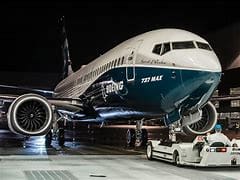
The Role of Leadership in Delivering Value
“The structural weaknesses in Boeing’s plane making flow can actually be neatly traced to strategic missteps that took root over three decades ago.” The Fortune article, How Boeing Broke Down: Inside the Series of Leadership Failures that Hobbled the Airline Giant, by Shawn Tully, February 22, 2024, did a deep dive into Boeing’s leadership. According to Tully, it all started with a focus on maximizing shareholder value versus balancing the interest of customers, employees, suppliers, and shareholders.
Outsourcing Failure
In 1997, Boeing’s strategy shifted to focusing on maximizing shareholder value like many other large corporations in the U.S. General Electric CEO, Jack Welch, made maximization of shareholder value famous. So, it was no surprise when an ex-GE executive decided to do the same at Boeing. However, I see the decline of Boeing really starting in December of 2003 when Harry Stonecipher came out of retirement to replace Philip Condit as CEO. With an increased emphasis on cost cutting and outsourcing plans for their new 787 Dreamliner, Stonecipher delivered the 787 three years late and with giant cost overruns. So, in September 2011, James Mcnerney who replaced Stonecipher in 2005, doubled down on the cost cutting with outsourced suppliers. McNerney implemented “Partnering for Success” to reduce prices paid to suppliers by at least 10% to 15%. This strategy worked wonders for Boeing’s shareholder returns of nearly 30% from 2011 to 2019. The non-relenting focus on maximizing shareholder value became a leadership failure when cost cutting included reducing quality inspections.
Shareholder Value vs End Customer Value
Shareholder value refers to the value delivered to the equity owners of a corporation. It depends on management’s ability to increase sales, earnings, and free cash flow, leading to an increase in dividends and capital gains for shareholders. In the short-term, maximizing shareholder value encourages efficient resource allocation and financial stability. Whereas, maximizing value to the end customer focuses on meeting their needs effectively. It is measured by customer satisfaction, loyalty, and repeat business. It involves offering products or services that provide value beyond what customers can find elsewhere. Companies prioritize customer-centric decisions, aiming to exceed customer expectations and build long-term relationships which can lead to increased sales and sustainable growth.
Companies face a challenge in balancing these two approaches. Maximizing shareholder value can sometimes conflict with creating exceptional customer experiences. Long-term sustainability requires considering both shareholder interests (financial stability) and stakeholder interests (customer satisfaction, employee welfare, environmental impact). Sustainable business practices that enhance shareholder value include ethical behavior, environmental responsibility, and social impact initiatives.
Considerations
The actions that benefit shareholders, doesn’t always equally translate to value for employees or customers. On the other hand, actions that benefit customers directly, may not always align perfectly with short-term financial goals. However, they do align with long-term sustainability of the corporation.
